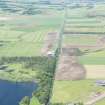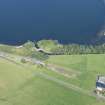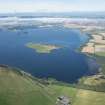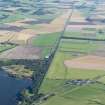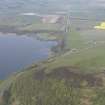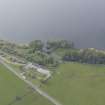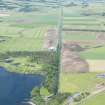Loch Leven, Sluice House
House (Period Unassigned), Pier(S) (Period Unassigned), Sluice(S) (Period Unassigned)
Site Name Loch Leven, Sluice House
Classification House (Period Unassigned), Pier(S) (Period Unassigned), Sluice(S) (Period Unassigned)
Alternative Name(s) New Cut Of River Leven; New Gullet
Canmore ID 76142
Site Number NT19NE 29
NGR NT 17055 99327
Datum OSGB36 - NGR
Permalink http://canmore.org.uk/site/76142
- Council Perth And Kinross
- Parish Portmoak (Perth And Kinross)
- Former Region Tayside
- Former District Perth And Kinross
- Former County Kinross-shire
Project (2007)
This project was undertaken to input site information listed in 'Civil engineering heritage: Scotland - Lowlands and Borders' by R Paxton and J Shipway, 2007.
Publication Account (2007)
By the 18th century the Leven, which has its source at Loch Leven, was one of Scotland’s most intensively harnessed rivers as a source of water power. Rennie reported in 1810 that the surface of the loch could safely be lowered 2 1/2 ft to reclaim more than 500 acres of land and, by canalising and regulating the winding river at its outlet (see Paxton and Shipway, 2007, 355), still be of advantage to mill owners. In 1813, 40 mills down to the sea were valued at £176 220. In all they had about 360 ft of falls, but it was not until 1827 that the Leven Improvement Act eventually enabled the water level of the loch to be lowered 4 1/2 ft, and an additional 4 1/2 ft, in effect a reservoir under the control of the mill owners, providing a regular supply of 5000 cubic. ft per minute. Regulation was achieved by means of powerful sluices at the outlet of the loch at the head of a new, straight, ‘cut’, 32 ft wide and nearly four miles long, replacing the river to Auchmuirbridge. The engineer initially was James Brown. In 1828 the value of the water power of each of the mills on the Leven was reassessed by Robert Thom of Rothesay and Geo. Moon of Russel Mill at a total of more than £2200 per annum.
Fife contractors Walker & Burns started excavating the cut on 1 July 1828 using Irish labour. The rate for excavation was generally 334 d [old pennies] per cu. yard. Wet weather adversely affected work and the final cost of the cut was just under £10 250 with a further £4350 to Robert Hutchison for masonwork on the sluices and New Gullet (NT19NE 28) and Auchmuir bridges. From October 1830 Edinburgh consulting engineer James Jardine superintended the delicate task of removing the coffer dam in front of the spillway and sluices at Loch Leven and successfully introduced its water to the ‘cut’ on 25 December 1830. New Gullet elliptical arch bridge (NT 1833 9972; NT19NE 28) of 35 ft span, now carrying the B920 road over the cut, has the look of a Jardine design.
The eventual total cost of about £40 000 had so much exceeded Brown’s estimates that it took Jardine, who in 1831 had become Commissioner to the Improvement Trustees, until 1849, and with further acts of parliament, to close the books. The surface area of the loch was reduced from about 4506 to 3406 acres.
Paxton and Shipway 2007
Reproduced from 'Civil Engineering heritage: Scotland - Lowlands and Borders' with kind permission from Thomas Telford Publishers.













